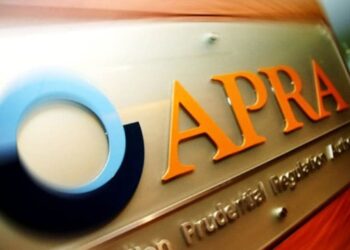The Reserve Bank of Australia (RBA) is expected to play it safe at its December meeting, leaving the cash rate unchanged amid a delicate balancing act between stubborn inflation and faltering economic growth.
With core inflation refusing to budge and gross domestic product (GDP) growth scraping historic lows, the Reserve Bank’s next moves are under intense scrutiny.
Core inflation, measured at 3.5 per cent year-on-year, remains well above the RBA’s 2–3 per cent comfort zone, defying a cooling economy. Productivity woes are partly to blame, with Q3 data revealing falling output per worker and surging unit labour costs, up 4.3 per cent year-on-year.
Paul Bloxham, chief economist at HSBC, attributes the inflation stickiness to several factors: cautious rate hikes designed to protect employment, expansionary fiscal policies, and a struggling supply side.
“We expect the RBA to be firmly on hold next week,” Bloxham said.
“Our central case is that cuts will start from Q2 2025, and we expect only a shallow easing phase, with the cash rate at 3.85 per cent by end-2025 and 3.60 per cent in early 2026.
“We see a 25 per cent chance of no cuts at all in 2025,” Bloxham said.
Compounding the RBA’s dilemma is Australia’s surprisingly resilient labour market, CBA’s economist Gareth Aird acknowledged, which remains at 4.1 per cent, even as GDP growth crawls at an annual rate of just 0.8 per cent – its slowest pace in decades outside of the pandemic.
Aird noted that rising joblessness was expected amid seven consecutive quarters of per-person economic contraction, but the labour market’s surprising resilience is sustaining inflationary pressures and keeping the RBA cautious.
“We expect the RBA board will leave the cash rate unchanged next week in a straightforward decision,” Aird said.
He highlighted that while the central bank expected to see another contraction in the economy on a per-capita basis in the September quarter, “GDP growth was softer than the RBA anticipated”.
But Aird is hopeful that the RBA could move towards a more dovish tilt in its communication this month, if the data indicates the labour market has loosened.
“We continue to hold our base case that the RBA will commence an easing cycle in February 2025. The risk clearly sits with a later start date. Bu there we note that money markets have moved over the past week more into alignment with our call,” he said.
Carl Ang of MFS Investment Management pointed out that external factors, like fiscal stimulus or potential US trade tariffs, could nudge the RBA’s hand. Like Aird, while Ang expects a hold, he is predicting a neutral tone in the bank’s communications.
“Looking ahead to 2025, the risk of a dovish pivot over the summer still leaves us pencilling in the RBA’s first rate cut for February. However, we do recognise the growing risk that the first RBA rate cut comes much later in H1 25 given the broadly positive fundamental direction observed so far,” he said.
“At this stage, the risk of further RBA rate hikes remains remote. One potential trigger scenario could involve a substantial tightening in the labour market accompanied by sequential core inflation remaining above the RBA’s inflation target for another two quarters.”
The RBA is meeting on 9 and 10 December before a two-month Christmas break.




